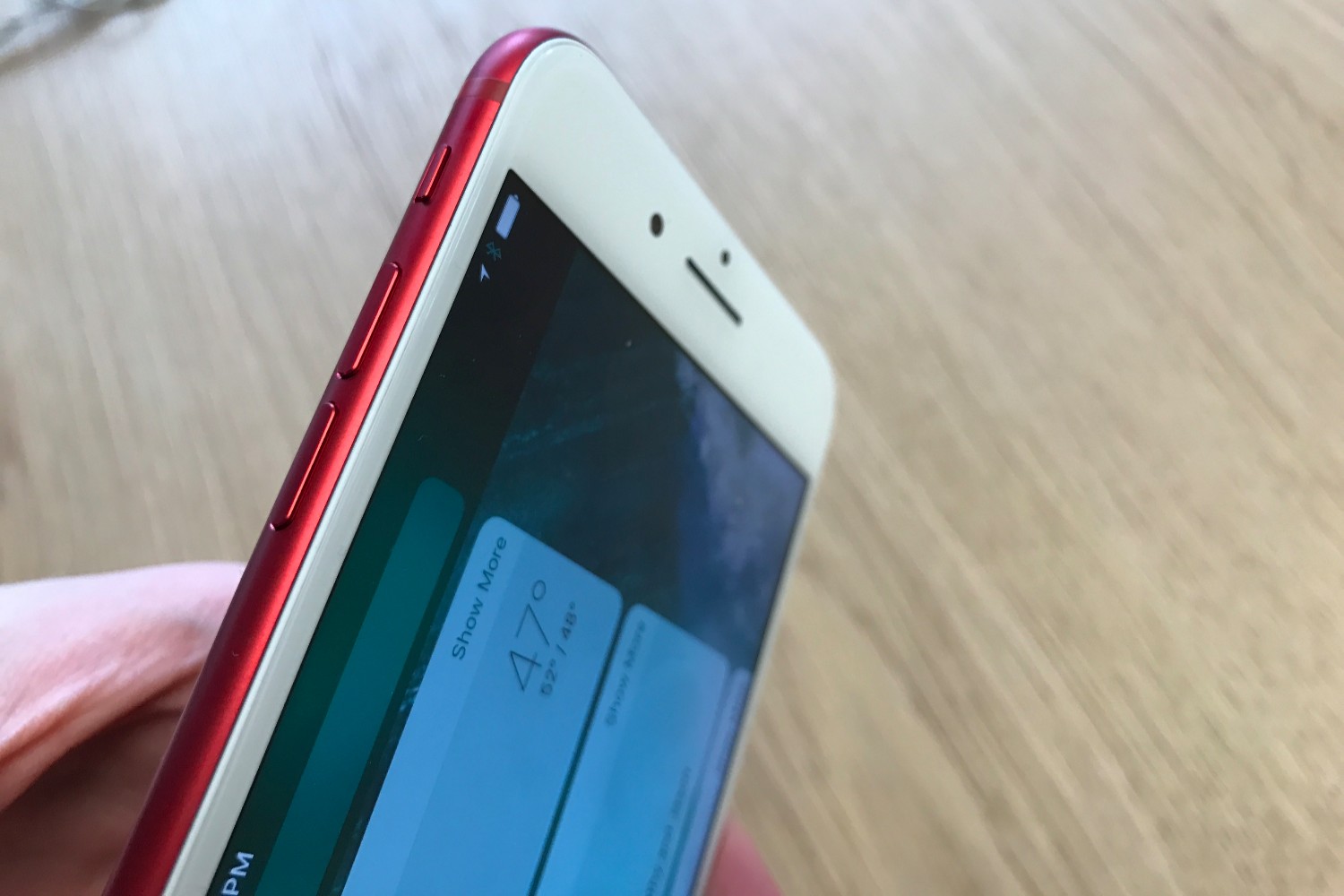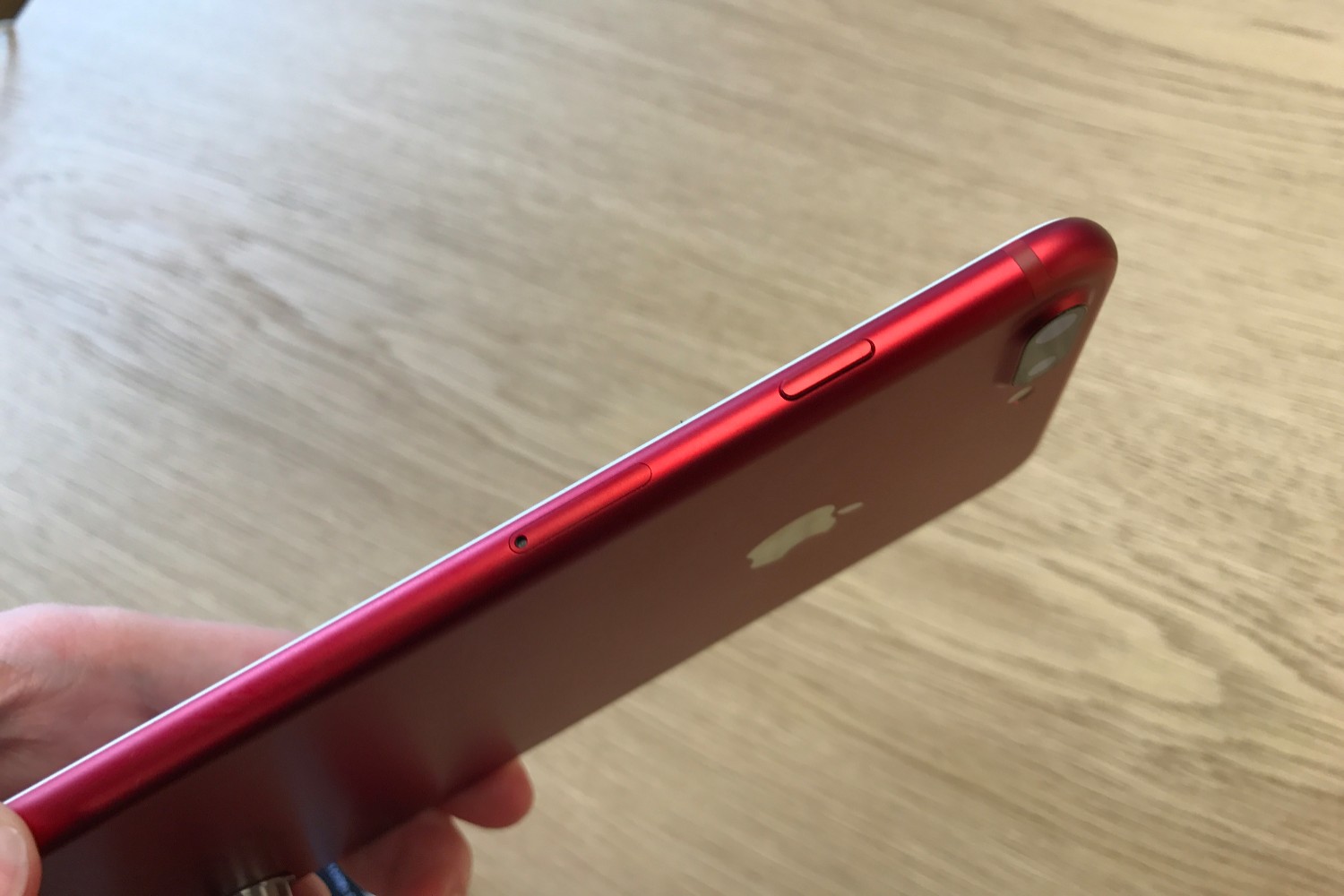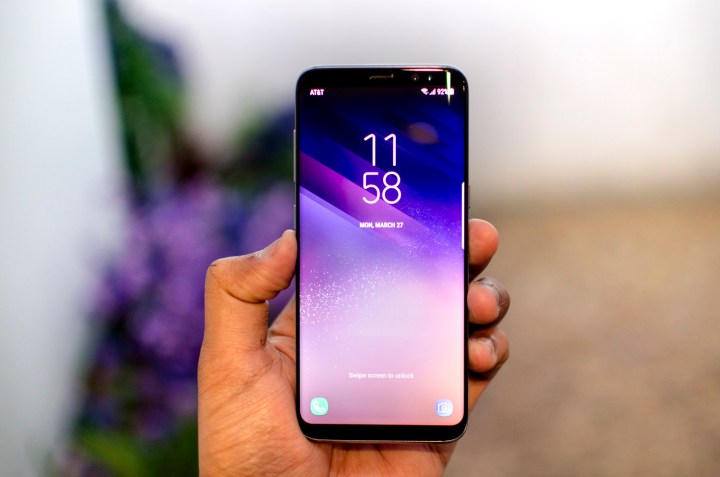
But the Galaxy S8 isn’t the only heavyweight on the mobile playing field. Apple’s iPhone 7 is still a top performer. To put an end to the debate, we pitted the two phones against each other in a specs battle to the finish.
Specs
|
Galaxy S8 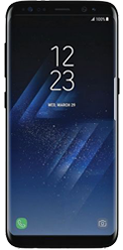 |
Apple iPhone 7 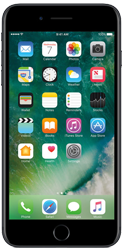 |
|
| Size | 148.9 × 68.1 × 8 millimeters (5.86 × 2.68 × 0.31 inches) | 138.3 × 67.1 × 7.1 millimeters (5.44 × 2.64 × 0.28 inches) |
| Weight | 5.47 ounces (155 grams) | 4.87 ounces (138 grams) |
| Screen | 5.8-inch Quad HD+ Super AMOLED | 4.7-inch Retina HD LED-backlit widescreen |
| Resolution | 2,960 × 1,440 pixels | 1,334 × 750 pixels |
| OS | Android 7.0 Nougat | iOS 10 |
| Storage | 64GB | 32/128/256GB |
| SD Card Slot | Yes | No |
| NFC support | Yes | Yes (Apple Pay Only) |
| Processor | Qualcomm Snapdragon 835 (U.S.) Samsung Exynos 8895 (International) |
Apple A10 Fusion with 64-bit architecture, M10 motion coprocessor |
| RAM | 4GB | 2GB |
| Connectivity | 4G LTE, GSM, CDMA, HSPA, 802.11a/b/g/n/ac Wi-Fi | 4G LTE, GSM, CDMA, HSPA+, 802.11ac/b/g/n/ac Wi-Fi |
| Camera | 12MP rear dual with OIS, 8MP front | 12MP rear with OIS, 7MP front |
| Video | 4K at 30fps, 1080p at 60fps, | 4K at 30fps, 1080p at 30 or 60fps, 720p at 240fps |
| Bluetooth | Yes, version 5 | Yes, version 4.2 |
| Fingerprint sensor | Yes | Yes |
| Other sensors | Barometer, gyro, accelerometer, proximity sensor, iris scanner | Barometer, 3-axis gyro, accelerometer, proximity sensor, ambient light sensor |
| Water Resistant | Yes, IP68 | Yes, IP67 |
| Battery | 3,000mAh | 1,960mAh |
| Charger | USB Type-C | Lightning |
| Quick Charging | Yes | No |
| Wireless Charging | Yes, Qi and PMA | No |
| Marketplace | Google Play Store | Apple App Store |
| Color offerings | Black, silver, orchid gray, blue (international), gold (international) | Rose Gold, Gold, Silver, Black, Jet Black |
| Availability | AT&T, Verizon, Sprint, T-Mobile, Unlocked | AT&T, Verizon, Sprint, T-Mobile |
| Price | Starting at $720 | $650 |
| DT Review | Hands-on | 3.5 out of 5 stars |
Comparing the specs of the Galaxy S8 and iPhone 7 gets a little tricky — Apple controls the operating system and the hardware, so it can offer a smooth and optimized user experience. Samsung uses Google’s operating system, and in the U.S. it uses Qualcomm’s Snapdragon 835, so it doesn’t have the same level of control as Apple.
Qualcomm’s eight-core, 64-bit Snapdragon 835 processor is the newest and beefiest of the company’s chip arsenal. It’s built on a 10-nanometer FinFET process, which crams 30 percent more parts into the same space than the previous generation of Snapdragon processors. It features four levels of thermal shielding that protect against overheating.
It’s too early to tell how — or if — those synthetic gains translate to real-world performance, but Qualcomm gave Anandtech a preview at its San Diego headquarters. Apple’s iPhone 7, meanwhile, packs the company’s quad-core 64-bit A10 Fusion processor, which is 40 percent faster than the A9 in the iPhone 6S and 6S Plus. Graphics performance is significantly improved, too — Apple said the A10’s image chip is 50 percent faster than that in the A9. And it’s dramatically more efficient thanks to two dedicated co-processors that handle low-intensity tasks.
In all likelihood, the Snapdragon 835 and A10 will trade blows. Anandtech’s testing shows the Snapdragon 835 scoring 2,672 in the web benchmark Kraken compared to the A10’s 1,119 (lower is better). In GFXBench, the two are neck-and-neck — the Snapdragon 835 managed 60 frames per second, while the iPhone 7 averaged 59.90. Basemark put the A10 ahead with a score of 1,538 compared to the Snapdragon 835’s 889. But 3DMark had the Snapdragon 835 dominating the A10 with a score of 3,844 versus the latter’s 2,806.
It’s worth noting that the iPhone 7 has half the amount of RAM as the Galaxy S8 (2GB vs. 4GB), but iOS doesn’t require the kind of memory that Android does, so it may be a moot point. We’ll be testing the S8 soon, but Apple’s OS-level control may still put the iPhone 7 ahead of the competition in terms of performance.
Winner: Apple iPhone 7
Design
There’s no two ways about it: The Galaxy S8 is drop-dead gorgeous. The front of the handset’s dominated by a 5.8-inch AMOLED curved screen that extends from the phone’s right-hand bezel to its left. It has a high 2,960 x 1,440 pixel resolution that’s vibrant and colorful, and it may be the best display we’ve seen in a smartphone.
There’s no home button — it’s been relegated to on-screen navigation icons at the bottom of the display. Short of the sensors flanking the top, it’s an exceptionally utilitarian look. It’s a different story around back, where Samsung has stuck a fingerprint sensor next to the rear camera and flash. It isn’t ugly, per say, but it’s a little busier than the iPhone 7’s minimalist finish.
But we can’t fault Samsung on its choice of materials. The Galaxy S8’s made of aluminum and glass, and that helps give it a more premium feel.
Short of the aluminum, the iPhone 7 couldn’t share less in common with the Galaxy S8. It’s got the curved, seamless aluminum unibody of its recent predecessors, but the infamous antenna lines on the rear casing now curve around the back corners. The iPhone does have a lower 1,334 × 750 pixels on its 4.7-inch display, but one advantage worth noting is 3D Touch, which serves up hidden menus if you press the screen with a little more force than usual.
There’s a debate to be had about whether a screen the Galaxy S8’s size and resolution is really necessary, but the facts are clear: On a technical level, the Galaxy S8 bests the iPhone 7’s screen in every metric. In excelling in display, Samsung wins points for design as we can’t stop staring at that Infinity Display.
Winner: Samsung Galaxy S8
Sound

It’s no secret that the iPhone 7’s ditched the standard 3.5-millimeter jack found on every other iPhone before it (not to mention most other smartphones and laptops). Instead, the iPhone’s Lightning connector — or included Lightning-to-3.5-millimeter adapter, as the case may be — handles audio, which makes using an old pair of wired headphones a bit of a chore.
You could buy a Bluetooth pair, of course. The iPhone 7 sports the W1, a Bluetooth chip that delivers audio more efficiently than competing solutions. But taking full advantage requires picking up a pair of with Apple’s AirPods or new Beats lineup, which is an expensive proposition.
You won’t have that dilemma with the Galaxy S8, which sports a familiar 3.5-millimeter jack. Most headphones work just fine, and the S8 will come packaged with earbuds from AKG Acoustics. The S8 also utilizes Bluetooth 5, which is said to offer four times the range as Bluetooth 4.2, as well as faster data transfer (though not at the same time) — you may have a better experience with Bluetooth-connected products.
When it comes to loudspeakers, though, the iPhone 7 has clear the advantage. Apple’s flagship boasts a stereo configuration that uses the phone’s earpiece and bottom speaker to deliver two times the volume of the iPhone 6s and “increased dynamic range,” according to Apple.
The Galaxy S8 retains the previous Galaxy’s single loudspeaker. We’ll have to put it through it spaces to see how it fares, but if it’s anything like the Galaxy S7’s tinny speaker, it’ll have a tough time besting the iPhone.
Still, in the current climate we think having a headphone jack is more useful than carrying around a dongle. The win goes to the Galaxy S8.
Winner: Samsung Galaxy S8
Battery life and charging
The Galaxy S8 packs a battery that’s largely on par with the Android competition. It’s 3,000mAh in capacity, and supports both wireless charging and Samsung’s rapid charging technology. It’s said to last about a day, and the Galaxy S8’s Snapdragon 835 processor may boost it a bit further — according to Qualcomm, batteries managed by the chip will maintain at least 80 percent of their original capacity after 500 charge cycles.
The iPhone 7, meanwhile, packs a 1,960mAh cell that lacks rapid charging and wireless charging. But the A10’s low-power cores help deliver at least a full day of juice, and the iPhone has excellent standby time.
The jury’s out on which phone lasts longer. But the Galaxy S8’s rapid charging and wireless charging features are enough to put it over the top.
Winner: Samsung Galaxy S8
Camera

The Galaxy S8’s camera is no different from the Galaxy S7’s camera, and that’s no joke. It’s the same 12-megapixel sensor found in last year’s model, down to the 1.44 micron pixel size and f/1.7 aperture. That’s not a bad thing — it benefits from a dual-pixel design, which speeds up autofocus by using 100 percent of the sensor’s pixels (traditional smartphone cameras use less than 5 percent). Compared to the Galaxy S6, it captures 96 percent more light.
The iPhone 7’s 12-megapixel shooter boasts an f/1.8 aperture, phase detection autofocus, and optical image stabilization. It’s able to capture stunning shots with that hardware, but it can’t quite match up to the iPhone 7 Plus’s dual-sensor camera. The larger iPhone’s setup is superb, with a 2x optical zoom and depth-of-field feature that convincingly simulates bokeh.
When we pitted the Galaxy S7’s camera against the iPhone 7, we noted that the Galaxy S7 tended to “amp up” the color in its pictures, giving some of them an almost hyper-real quality. The iPhone 7’s colors were a little more natural, but tended to come out noisier in low light.
No matter which you choose, though, you’re going to capture some awesome pictures you’ll be proud of. We’re calling this one a draw.
Winner: Draw
Software
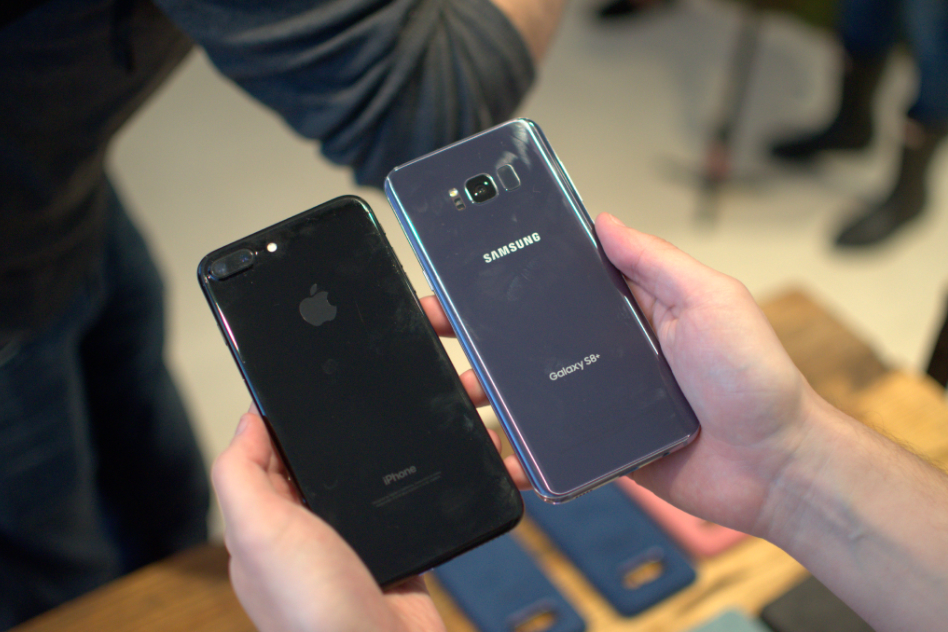
The Galaxy S8 runs Android Nougat, the latest stable version of Google’s Android operating system. The iPhone 7, in contrast, runs iOS 10, the newest iteration of Apple’s mobile operating system.
Comparing the iPhone 7’s iOS software to the Galaxy S8’s brand of Android, dubbed TouchWiz, is comparing apples and oranges. In broad terms, though, it’s worth noting that Android is generally more customizable than iOS, though iOS is considered a little easier to use.
One of Samsung’s new software features on the S8 is Bixby, an assistant that’s activated with a dedicated physical button on the Galaxy S8’s side. It taps into the 10 apps that come preloaded on the Galaxy S8: Gallery, Contents, Settings, Camera, and so forth. You can delegate tasks with your voice, or use the Vision feature to have Bixby recognize objects in pictures (a bottle of wine, for example). And you can check Bixby Home, which supplies information in cards to the left of the home screen. It should be noted that a lot of what Bixby can do isn’t exactly innovative — in fact, Bixby’s capabilities piggyback off other apps you can download on iOS, like Vivino and Pinterest’s Lens. If Bixby’s not for you, there’s always the stellar Google Assistant as a backup.
The Galaxy S8 also has Dex, a feature that transforms the it into a fully functional desktop. Plug the phone into the Dex Dock (sold separately) and you’ll have a Windows-like interface that supports mouse and keyboard input. It’s a little like Microsoft’s Continuum. Unfortunately both Bixby and DeX require you to use Samsung’s apps at the moment, so they may not be useful at the moment.
Software features aren’t the only major differences between the platforms, though. High-profile apps and games generally come to the App Store first, and Android updates are frequently beholden to the Android manufacturers and carriers who must approve them. Samsung isn’t always quick to update its devices with the latest patches and upgrades — the Galaxy S7, for example, got Android 7.0 Nougat earlier this year, quite a few months after Google released it.
Apple’s updates roll out fast — even to older devices. That alone is a huge win for Apple, giving it the win here.
Winner: Apple iPhone 7
Durability

Without dropping it shoulder-level onto concrete, the Galaxy S8 is probably less likely to survive a fall than the iPhone 7, which isn’t wrapped in glass
Both devices are water-resistant though — Samsung’s Galaxy S8 maintains an IP68 rating, whereas the iPhone 7 has an IP67 rating. It’s almost the same thing, though you should be able to take the S8 0.5 meters deeper for 30 minutes.
Dropping a phone is more likely than water damage, and since both already protect against it, we’ll take the iPhone’s aluminum back over the slippery, dangerous all-glass Galaxy S8.
Winner: Apple iPhone 7
Price and availability
The Galaxy S8 starts at $720 in the U.S., which is a lot more expensive than the iPhone 7’s $650 starting price. To be fair, with the iPhone you’re starting with 32GB of storage with no MicroSD card for that price, and the S8 comes with 64GB and a MicroSD card.
Neither phone is cheap, but the iPhone still offers a comparable if not better experience for less money.
Winner: Apple iPhone 7
Overall winner: iPhone 7
It’s a close match, but the iPhone 7 takes the cake as it offers strong performance, and immediate software updates for a lower price. Some of the iPhone 7’s features are also comparable to the Galaxy S8, such as the camera.
But at the end of the day, it largely depends on what operating system you prefer, and you won’t be disappointed whichever way you go.
